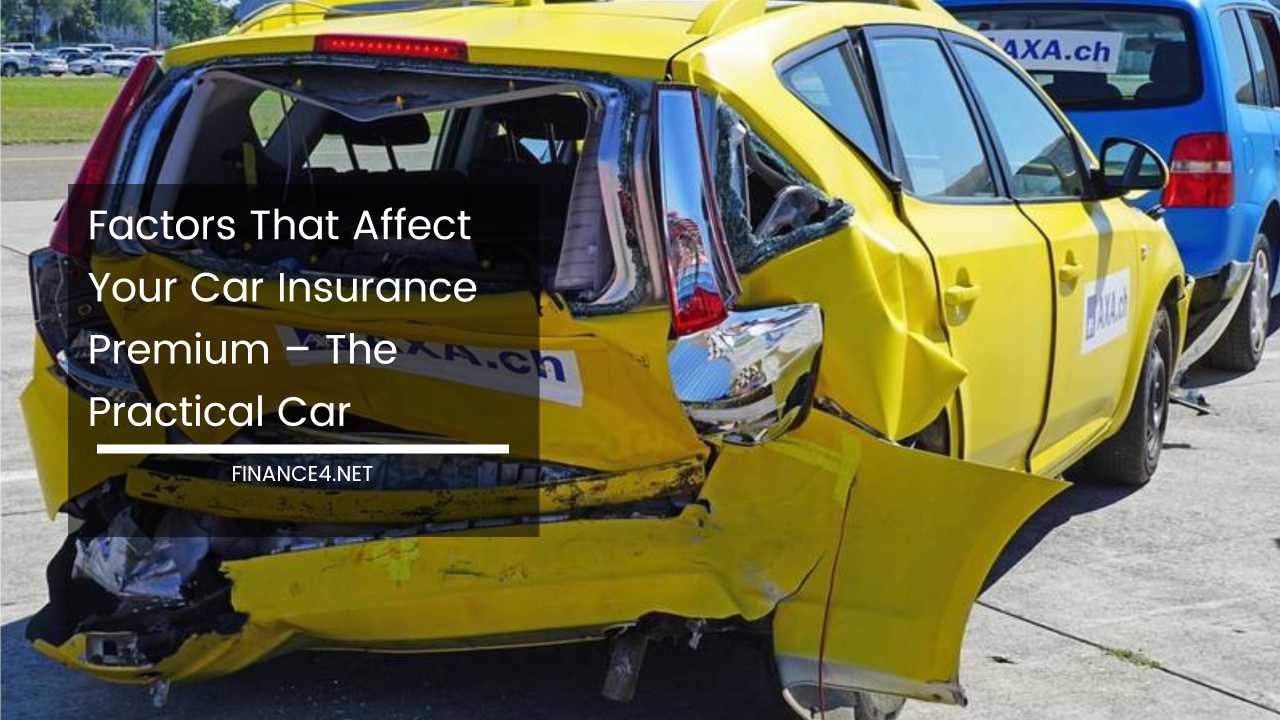Save on Car Insurance: Key Factors

Car insurance premiums can feel like an enigma, shrouded in mystery with seemingly unpredictable price fluctuations. However, there’s a clear logic behind the numbers. Insurance companies meticulously assess various factors to determine your premium, each playing a crucial role in evaluating your risk profile as a driver.
By understanding these factors, you can empower yourself to make informed decisions when choosing coverage and potentially achieve significant cost savings in the long run.
1. Driving Record: A Beacon of Your Past
One of the most influential factors impacting your car insurance premium is your driving record. Insurance companies view your past driving behavior as a strong predictor of your future risk.
If your history is marred by accidents, traffic violations, or speeding tickets, insurers will likely perceive you as a higher risk and charge you heftier premiums.
Conversely, a clean driving record with no accidents or violations paints you as a responsible driver and translates into lower premiums.
Here are some additional considerations regarding driving record:
- Severity of Violations: Not all violations carry the same weight. Reckless driving or DUIs will have a more significant impact on your premium compared to minor offenses like forgetting to turn on your headlights.
- Time Since Last Violation: The further removed you are from past violations, the less impact they have on your current premium. Over time, a clean driving record can gradually improve your insurance rates.
- State-Specific Variations: Traffic laws and violation penalties can vary by state. Insurance companies factor in these variations when assessing risk and setting premiums.
2. Age and Experience: A Balancing Act
Age and driving experience are significant factors when it comes to insurance premiums. Statistically, younger and inexperienced drivers are more likely to be involved in accidents. This translates to higher insurance rates for this demographic group.
Conversely, older drivers with years of experience typically enjoy lower premiums, assuming they have a clean driving record.
Here’s a deeper dive into how age and experience interact with premiums:
- Young Drivers: Teenagers and young adults with limited driving experience are considered high-risk drivers and face the highest premiums. As they gain experience and age, their premiums gradually decrease.
- Mature Drivers: Drivers reaching their 50s and 60s, with a history of safe driving, typically benefit from the lowest premiums. However, some insurers may increase premiums for drivers in their very late years due to potential health concerns that could affect driving skills.
- Defensive Driving Courses: Regardless of age, completing defensive driving courses can lead to discounts on your insurance. These courses equip drivers with valuable skills to navigate challenging situations and enhance road safety.
3. Unveiling the Vehicle: Make, Model, and Age
The make, model, and age of your car significantly impact your insurance premium. Here’s why:
- Luxury and Performance Vehicles: Cars that are expensive to repair or replace, such as luxury vehicles or high-performance sports cars, generally come with higher insurance costs. These vehicles are statistically more likely to be targeted for theft and vandalism, leading to higher premiums.
- Safety Features: Vehicles equipped with advanced safety features like anti-lock braking systems, airbags, and lane departure warnings may qualify for discounts. These features can potentially reduce the severity of accidents and associated repair costs, incentivizing insurers to offer lower premiums.
- Age of the Vehicle: As cars age, their market value depreciates. Insurers typically pay the actual cash value (ACV) of the car in the event of a total loss. For older cars with lower market values, the cost of repair or replacement is lower for insurers, often resulting in lower premiums.
4. Annual Mileage: How Far You Go Matters
The distance you drive each year, measured in annual mileage, can significantly affect your car insurance premium.
The logic is straightforward: the more you drive, the greater your exposure to potential accidents. Insurance companies consider annual mileage when calculating premiums.
Drivers who use their cars for daily commutes or frequent long-distance travel are likely to pay more compared to those who drive minimally.
Here are some additional tips regarding annual mileage:
- Accurate Estimates: Providing accurate estimates of your annual mileage to your insurer is crucial. Underestimating mileage could lead to issues when filing a claim, while overestimating might result in overpaying for coverage.
- Alternative Transportation: Consider using alternative modes of transportation for short errands or commutes to reduce your annual mileage and potentially lower your premium.
- Usage-Based Insurance: Some insurers offer usage-based insurance programs that track your mileage and driving habits. These programs can be beneficial for low-mileage drivers who can potentially qualify for significant discounts.
5. Location, Location, Location: Your ZIP Code Speaks Volumes
Where you live plays a crucial role in determining your car insurance premium. Urban areas with densely packed populations tend to have higher rates of accidents thefts, and vandalism, leading to higher insurance premiums.
Additionally, areas prone to extreme weather conditions or high crime rates may also experience increased insurance costs. Conversely, drivers in rural or suburban areas typically enjoy lower premiums due to lower risk factors.
Here are some additional considerations regarding location:
- Crime Rates: Areas with higher crime rates, particularly auto theft, will have higher insurance premiums. This is because insurers statistically anticipate a greater likelihood of your car being stolen in such areas.
- Weather Events: Regions frequently experiencing severe weather events like hailstorms, hurricanes, or floods may face higher premiums due to the increased risk of damage to vehicles.
- Proximity to Garages: Parking your car in a secure garage overnight can potentially qualify you for discounts on your insurance premium. This is because a garage offers protection from theft, vandalism, and weather damage, reducing the risk for the insurer.
6. Credit History: An Unexpected Influence
You might be surprised to learn that your credit history can influence your car insurance premium. Many insurers utilize credit-based insurance scores, which are derived from your credit report, to assess your likelihood of filing claims.
Studies have shown a correlation between credit history and insurance claims, with individuals with lower credit scores statistically more likely to file claims.
As a result, those with poor credit may face higher insurance premiums compared to those with excellent credit. It’s important to maintain good credit not only for financial reasons but also to secure lower insurance rates.
Here are some additional points regarding credit history and insurance:
- Not All States Use Credit Scores: Some states have regulations prohibiting insurers from using credit scores when calculating premiums. Check your state’s regulations to see if this applies to you.
- Focus on Improvement: Even if your credit score isn’t ideal, focus on improving it over time. Making consistent and responsible credit decisions can gradually improve your score and potentially lead to lower insurance premiums in the future.
7. Deductible Amount: Striking a Balance
Your deductible, the amount you agree to pay out of pocket before your insurance coverage kicks in, can significantly impact your premium.
Opting for a higher deductible typically results in lower premiums since you’re assuming more financial responsibility in the event of a claim. Conversely, a lower deductible means higher premiums since the insurer bears more of the financial risk.
When choosing a deductible amount, consider your financial situation and how much you can comfortably afford to pay out of pocket in the event of an accident.
Here are some additional tips regarding deductibles:
- Matching Your Risk Tolerance: If you’re a safe driver with a clean record, opting for a higher deductible can be a cost-effective strategy. However, if you’re more accident-prone or have limited savings, a lower deductible might be preferable for peace of mind.
- Matching Your Vehicle’s Value: For older cars with lower market values, a high deductible might make sense as the repair or replacement cost might be close to the deductible amount anyway.
8. Coverage Limits: Finding the Right Fit
The amount of coverage you select also affects your insurance premium. While it may be tempting to choose minimal coverage to save money upfront, insufficient coverage could leave you financially vulnerable in the event of a significant accident.
On the other hand, higher coverage limits provide greater protection but come with higher premiums. It’s essential to strike a balance between adequate coverage and affordability based on your individual needs and budget.
Here are some key types of coverage to consider:
- Liability Coverage: This covers property damage and bodily injury caused to others in an accident you are at fault for.
- Collision Coverage: This covers damage to your own car in the event of a collision with another vehicle or object.
- Comprehensive Coverage: This covers damage to your car caused by events other than collisions, such as theft, fire, vandalism, or weather events.
Conclusion: Taking Control of Your Insurance Costs
Several factors influence your car insurance premium, reflecting your level of risk as a driver. By understanding these factors and how they contribute to your premium, you can make informed decisions when selecting coverage and potentially save money on your insurance costs.
Whether it’s maintaining a clean driving record, choosing the right vehicle, managing your credit responsibly, or adjusting your coverage options, taking proactive steps can help you secure the coverage you need at a price you can afford.
Remember, insurance premiums are not set in stone, and you can often adjust them by taking control of the factors within your influence.
Additional Tips for Saving on Car Insurance:
- Shop Around and Compare Rates: Don’t settle for the first quote you receive. Get quotes from multiple insurance companies to compare rates and coverage options.
- Maintain a Multi-Policy Discount: Bundling your car insurance with other policies offered by the same company, such as homeowner’s or renter’s insurance, can often qualify you for a multi-policy discount.
- Take Advantage of Safety Features Discounts: As mentioned earlier, vehicles equipped with advanced safety features like anti-theft systems or automatic emergency braking may qualify for discounts on your insurance premium.
- Maintain a Good Student Discount: Young drivers with good academic records can potentially qualify for good student discounts from some insurance companies. This discount incentivizes responsible behavior and acknowledges the lower risk associated with students who prioritize academics.
- Ask About Low Mileage Discounts: If you drive significantly less than the national average, some insurers may offer low mileage discounts to reflect the reduced risk of accidents.
- Consider Usage-Based Insurance (UBI): For low-mileage drivers or those who primarily commute in low-congestion areas, UBI programs that track mileage and driving habits can be a cost-effective option. These programs reward safe driving behavior with significant discounts.
- Increase Your Deductible (if Financially Feasible): As discussed previously, opting for a higher deductible can significantly lower your premium. However, ensure you have the financial resources to comfortably cover the deductible amount in case of an accident.
- Maintain a Clean Driving Record: This remains the most significant factor influencing your premium. Practice safe driving habits, avoid traffic violations, and participate in defensive driving courses to maintain a clean record and reap the rewards of lower insurance costs.
Beyond the Basics: Additional Coverage Options
While basic car insurance provides essential protection, additional coverage options can offer further peace of mind:
- Uninsured/Underinsured Motorist Coverage: This protects you in the event of an accident caused by a driver with no or inadequate insurance coverage.
- Roadside Assistance: This coverage provides various benefits in case of breakdowns or emergencies on the road, such as towing, flat tire service, or battery jumps.
- Rental Reimbursement: This covers the cost of renting a car while your vehicle is being repaired after an accident.
- Medical Payments Coverage: This covers medical expenses for you and your passengers in the event of an accident, regardless of who is at fault.
Remember: The best car insurance policy is one that strikes a balance between affordability and adequate coverage to meet your individual needs.
By understanding the factors influencing your premium and exploring available discounts and coverage options, you can make informed decisions and secure the right protection for your car and yourself.
Taking Charge of Your Insurance Journey
Car insurance is an essential expense for any car owner. While the initial process of understanding premiums and choosing coverage can seem overwhelming, the knowledge you gain empowers you to make informed decisions.
By being proactive in managing the factors you can influence and exploring cost-saving strategies, you can navigate the world of car insurance with confidence and secure the coverage you need at a price you can afford.



